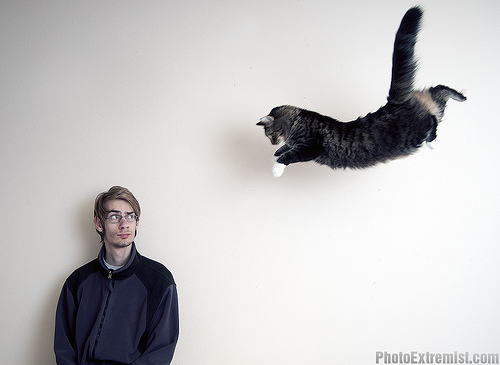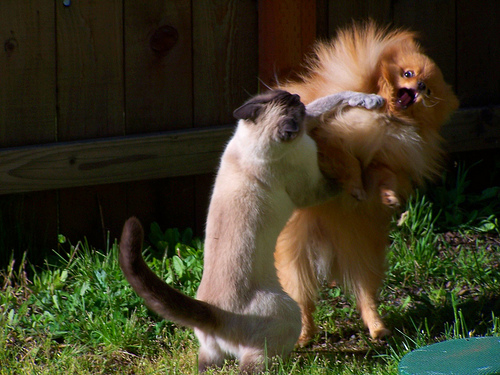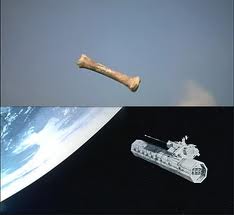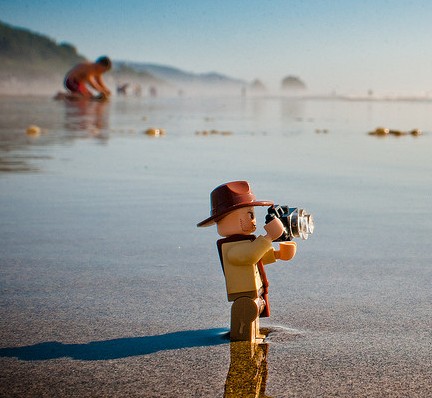String Shots Together to Make Dynamic Scenes
We’re taking a look at how movies are filmed. If you haven’t noticed, movies are made up of a string of shot sequences—don’t confuse these with whole scenes. In creating a shot sequence, the aim of using a camera is to imitate the way the human mind uses the eyes. Our minds will not let our eyes stay fixed on any one subject for more than four or five seconds. Our eyes are constantly moving and focusing on different subjects.
For example, you may be walking down the street and you come across two of your friends having a small picnic at one of the tables in the city park at the corner. Your mind will probably direct your eyes into the following views of the couple:
- First, you would have a Wide-Angle or Long Shot of the entire scene.
- As you walk toward the couple, you will look at one person, and then the other.
- As you come closer, you might shift your focus and look at what is on the table.
- Your next glance will probably be at the first person who speaks to you.
- As the conversation continues, your eyes will shift from person to person, from person to table, from an action of one person to that person’s face etc., etc. The combinations could be endless.
Have an Objective in Mind
This type of realistic behavior is what you want to capture in your fiction writing, and the way to do it is by utilizing various camera angles, the difference being that you have a specific intention in doing so. Rather than show a random encounter with boring dialog and nothing all that interesting happening in the scene—which is what real life often is like—you have an objective in playing this scene out, that high point you are leading to, a moment of revelation or plot twist that is going deliver with a punch when you reach it. And so every camera angle is used deliberately to give the most punch when needed.
Television producers follow a basic rule that no shot should last more than thirty seconds, and no scene should last longer than three minutes. This is the 30-3 Rule. This is the basic idea of how shot sequences are made. You take one long scene and break it down into a variety of short shots.
How does this translate to fiction? A scene can take much longer than three minutes to read, and sometimes it may cover a number of moments in time, some even separated by days and weeks. But if you break down your scenes and look at the segments that take place, you will find a natural rhythm that feels just right. Remember, scenes should be mini novels, with a beginning, middle, and end. It doesn’t work to place strict rules on scenes, for they should be as long as they need to be—whatever it takes to effectively reveal the bit of storyline intended while keeping the pacing and tension taut. However, I believe if you lay out your scenes intentionally with a series of camera shots, leaving out excessive narration and backstory, your scenes will “move” like a movie and will feel like concise, succinct movie scenes.
Two Types of Camera Shots
Essentially, there are two types of camera shots—stationary and moving. I’ve never seen them classified this way, so I use these terms I came up with. Or you could think of them as static and dynamic, or still and kinetic. Use whatever terms work for you. But basically we’re talking about filming a moment in which the camera is either moving or not moving. Simple.
You decide which types of camera shots you will use based on your high moment. If the high point of your scene involves showing an expression of someone’s face, an object (like a ring), a small detail not before noticed, then the key camera shot will be a Close-Up (CU), which might also be called a Close Shot, or it might be Angle On. If the high moment will be a sudden massive explosion due to an unnoticed gas leak, the key moment will require a Pull Back (PB) and/or a Long Shot (LS). By knowing the key moment and how your plot builds to it, you can plan the camera angles to best enhance the visual experience and evoke the strongest emotional reaction from your reader.
Of course, your scenes have more to them than just the high moment, and for that reason, you will need to use a number of camera angles for each scene, for the most part. Once you identify your high moment and determine what shot is needed then (since that shot needs the most emphasis), you can work backward and forward, figuring out the rest of the shots. This is just my method. I have no idea if movie directors think this way or plan each scene out in any particular fashion. Maybe some work chronologically, deciding on the first shot and going from there. But I believe if you use this method, it will best serve you and the needs of your plot.
So as we go through these stationary and moving camera shots, think about when you might want to keep the “camera still” and when you want to move it from one place to another. As you will see, there’s a specific purpose to each shot.
This week, think about the high moment in one or more of your scenes. Do you need to be up close to someone or something when that moment is played out or that bit of important information is revealed? Do you need to be far away to show something vague or give a more sweeping view of what is happening? Play around with different camera angles you might use to highlight that moment and share some insights in the comments of this post.












It’s interesting to think of scenes in fiction this way. This article is a keeper, to read again and then try to apply this film technique to my scenes.
I thoroughly appreciate this angle in writing scenes, Susanne. Well done.
I am wondering, though, why my gravatar image does not show on your site when I comment. Is there something I should be doing differently?
Oops, I guess it does!
Thank you so very much for this post, which is invaluable advice to me right now as I face down re-working/re-writing a novel by April.
I’ve been frozen in fear, doubt, even though I pulled it together in 1 1/2 weeks to send to my advisor and second reader in my graduate school program. I’ve begun revisions. This gives me great fuel for thought.
Thank you.
Okay, you’re talking about camera techniques. Can you give an example of some writing that would show how this is done on the page, as opposed to on the stage?
I will be giving dozens of examples as we go through the course for the year, so just stay tuned!
I love your thorough and well-written explanation. This is a great way to think about and create scenes. Keep the great advice coming and I’ll keep “shooting my novel”.
This is a string of pearls! Scenes explained in such detail. Absolutely love this new series you’ve started. After your first one last year, this is the perfect continueous of it bringing the totality of one’s novel together; written and visually. Perfect! Thank you.
Great ideas. Your concept of close up and backing away adds movement to a scene–which I think is one of the main messages your are giving us. There has to be business taking place in scenes. You cannot just have two people sitting at a table and talking through your entire novel. It always comes down to show don’t tell.
We’ll be going through many, many camera shots and showing examples of how they can be used effectively and for what purposes. Lots more to come. Thanks for the comment!
good stuff c.s.. you make learning fun. lots of fodder to ponder!
i was about to give up on blogs to concentrate on my own when you threw the right hook during the holidays.
I’m so glad! We have a lot of fun coming up!
I really like this viewpoint of connecting a movie scene to writing. When I first started writing I found I had too much narrative and not enough dialogue. I have been working at “saying less and telling more”. This is another step or viewpoint about getting where I need to go.
Thanks so much.
Excellently done! Much of this is already in use in my own writing, but the fresh perspective is invaluable -and, I’m thinking it will help me to get through those at times dreaded ‘descriptive’ scenes to think of them as camera shots instead. I’m subscribing to this feed and I will be watching for ‘more to come’! Glad to connect with you Ms Lakin. Peace*Light*Love